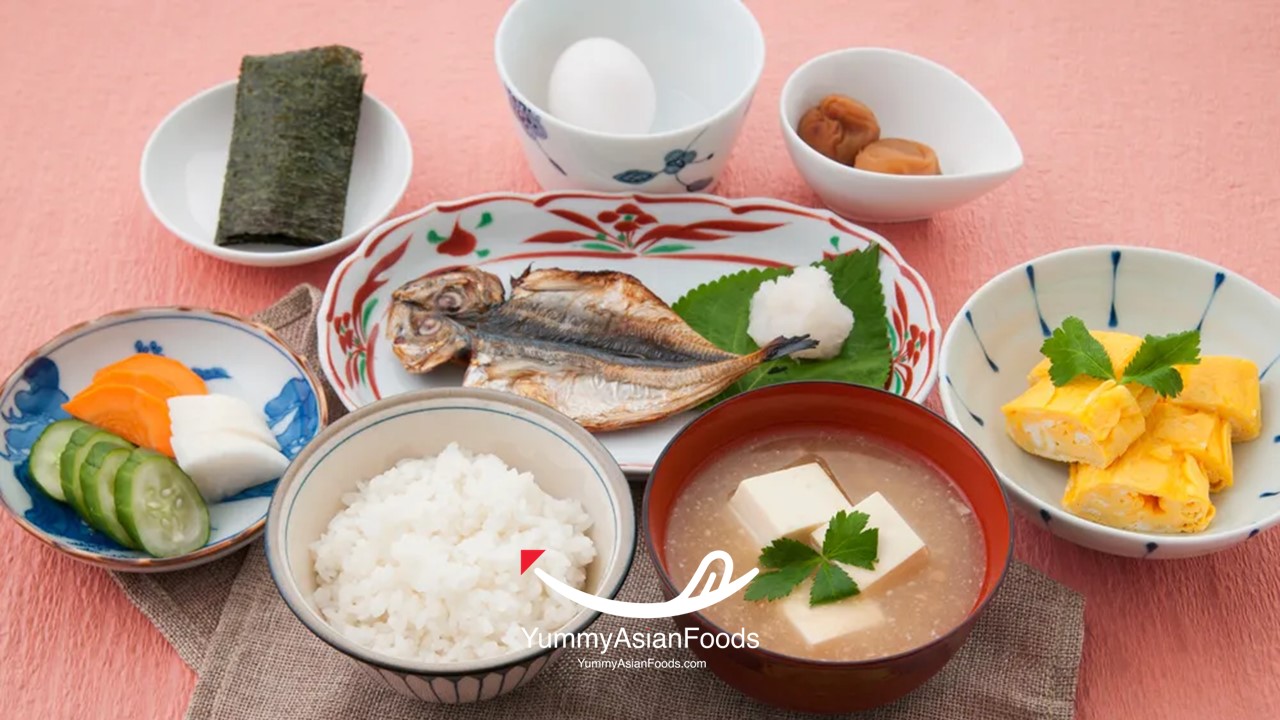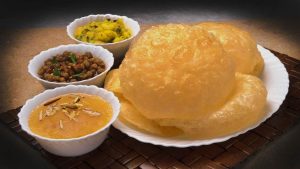Table of Contents
ToggleJapanese breakfast holds a significant place in the country’s culture and is often considered the most important meal of the day. This traditional morning feast reflects the Japanese emphasis on balance, nutrition, and presentation. Breakfast dishes in Japan typically consist of a diverse array of dishes, showcasing the country’s culinary richness and attention to detail. From steamed rice and miso soup to grilled fish, pickles, and a variety of side dishes, breakfast in Japan offers a delightful assortment of flavors and textures that cater to different palates and dietary preferences.
The variety of traditional dishes served at a Japanese breakfast is a testament to Japan’s culinary heritage and regional diversity. Each dish is carefully prepared to highlight the freshness and seasonality of ingredients, resulting in a harmonious blend of flavors and colors on the breakfast table. Moreover, the meticulous arrangement and serving of these dishes demonstrate the Japanese dedication to aesthetics and dining etiquette, making breakfast a gastronomic and cultural experience. Whether enjoyed at home, in a ryokan (traditional Japanese inn), or at a local restaurant, the Japanese breakfast offers a window into the country’s rich culinary traditions and values.
The Cultural Significance of Japanese Breakfast
Japanese breakfast holds significant cultural importance, emphasizing balance, variety, and presentation. The traditional Japanese breakfast reflects the Japanese approach to food and dining, where the focus is on incorporating a diverse range of flavors, textures, and colors into a single meal. This emphasis on balance and variety is not only a reflection of the Japanese culinary tradition but also of the broader cultural values of harmony and equilibrium.
In traditional Japanese breakfasts, presentation is also given great importance, with the arrangement of dishes and the use of colorful and seasonal ingredients playing a crucial role in creating an aesthetically pleasing meal. This attention to presentation not only enhances the dining experience but also reflects the Japanese value of beauty in everyday life. The cultural significance of breakfast dishes in Japan lies in their nutritional value and ability to reflect and reinforce the cultural values of balance, variety, and aesthetic appreciation.
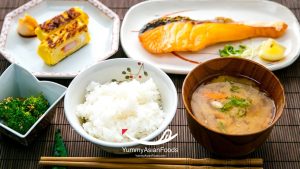
13 Authentic Japanese Breakfast Dishes
1. Miso Soup 味噌汁: A traditional Japanese soup made with fermented soybean paste and usually containing tofu, seaweed, and green onions.
2. Natto 納豆: Fermented soybeans are often served with soy sauce, mustard, and green onions.
3. Grilled Fish 焼き魚: Commonly mackerel or salmon, served as a protein-rich breakfast component.
4. Rice (Gohan) ご飯: A staple of Japanese cuisine, often served as part of a traditional breakfast.
5. Tsukemono 漬物: Assorted pickled vegetables, providing a crunchy and tangy side dish.
6. Nori 海苔: Sheets of dried seaweed are often served as a wrap for rice or other dishes.
7. Tofu 豆腐: Soft, creamy soybean curd commonly served as part of a healthy Japanese breakfast.
8. Okonomiyaki お好み焼き: A savory pancake made with cabbage, flour, and other ingredients, often enjoyed for breakfast.
9. Yakizakana 焼き魚: Grilled fish, a popular breakfast dish in Japan.
10. Onigiri おにぎり: Rice balls are often filled with pickled plums, salmon, or other savory ingredients, providing a convenient and portable breakfast option.
11. Natto Omelette: A combination of natto and eggs, creating a unique and nutritious breakfast dish.
12. Tamagoyaki 玉子焼き: A rolled omelet made by rolling several thin layers of egg on top of each other.
13. Curry Rice (カレーライス, karē raisu): The national dish of Japan
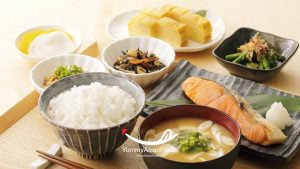
Tips for Creating a Healthy Japanese Breakfast
When aiming to create a healthy Japanese breakfast, it’s essential to incorporate traditional elements such as steamed rice, miso soup, grilled fish, and pickled vegetables. To adapt these components to a modern, health-conscious morning routine, consider using brown rice for added fiber and nutrients, opting for low-sodium miso paste, and choosing lean fish varieties like salmon or mackerel. Additionally, incorporating fresh ingredients such as nori seaweed, tofu, and natto can boost the nutrient density of the Japanese breakfast while adding unique flavors and textures.
When sourcing authentic Japanese ingredients for your breakfast, look for specialty Asian grocery stores or online suppliers that offer a wide selection of traditional products. For those with specific dietary preferences or restrictions, consider adapting traditional breakfast recipes to accommodate your needs. For example, substitute tofu for fish to create a vegetarian-friendly option or use gluten-free soy sauce to make the meal suitable for individuals with gluten sensitivities. Embracing a Japanese breakfast’s principles while adjusting to suit individual dietary needs can result in a nourishing and satisfying morning meal.
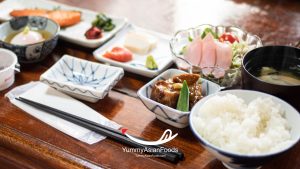
The Difference Between Chinese and Japanese Breakfast Cuisine
Chinese breakfast cuisine is known for its savory flavors and variety of dishes, often featuring foods like steamed buns, congee, and fried dough sticks. These dishes are typically hearty and satisfying, making them perfect for starting the day with a flavorful punch. In contrast, Japanese breakfast cuisine tends to be lighter and more delicate, focusing on fresh ingredients like fish, rice, miso soup, and pickled vegetables. The emphasis in Japanese breakfast is on balance and simplicity, providing a gentle start to the day that still manages to be nourishing and delicious.
One key difference between Chinese and Japanese breakfasts lies in the cooking methods used. While Chinese cuisine often involves frying or steaming to create bold flavors and textures, Japanese cuisine leans towards gentle simmering or grilling techniques that preserve the natural essence of each ingredient. This difference in cooking styles results in distinct flavor profiles for each cuisine’s breakfast dishes: rich umami notes dominate Chinese dishes, while clean, subtle tastes define Japanese fare.
Both Chinese and Japanese breakfast cuisines offer unique culinary experiences that reflect their respective cultures’ values and traditions. Whether you prefer a hearty start to your day with flavorful dumplings or a light touch of fresh fish with rice, exploring these two diverse breakfast options can provide insight into the rich tapestry of Asian culinary heritage.
The Difference Between Korean and Japanese Breakfast Cuisine
Korean and Japanese breakfast cuisines offer unique flavors and textures that showcase the rich culinary traditions of each country. In Korea, a typical breakfast may include dishes like kimchi (fermented vegetables), bulgogi (marinated grilled beef), and japchae (stir-fried glass noodles). These dishes are known for their bold flavors and use of spicy and tangy ingredients.
On the other hand, Japanese breakfast cuisine focuses more on simplicity, balance, and presentation. A traditional Japanese breakfast often consists of steamed rice, miso soup, grilled fish, pickles, and seaweed. The emphasis is on fresh, seasonal ingredients that are carefully prepared to highlight their natural flavors. This approach reflects the Japanese philosophy of wabi-sabi, finding beauty in imperfection and simplicity.
While Korean breakfast cuisine tends to be hearty and flavorful with a mix of bold spices, Japanese breakfast cuisine leans towards subtlety and elegance with an emphasis on freshness and balance. Both cuisines offer a delightful culinary experience that reflects each country’s cultural values and traditions.
Final Bite: Authentic Japanese Breakfast Dishes
Japanese breakfast dishes hold significant cultural and nutritional value. They reflect Japan’s rich traditions while offering a diverse array of healthy options. From the nourishing miso soup to the nutrient-packed natto and the refreshing tsukemono, Japanese breakfast presents many flavorful and wholesome choices. By exploring the variety of Japanese breakfast options, individuals can integrate healthier and more diverse choices into their morning meals, ultimately enriching their culinary experiences and promoting overall well-being.


